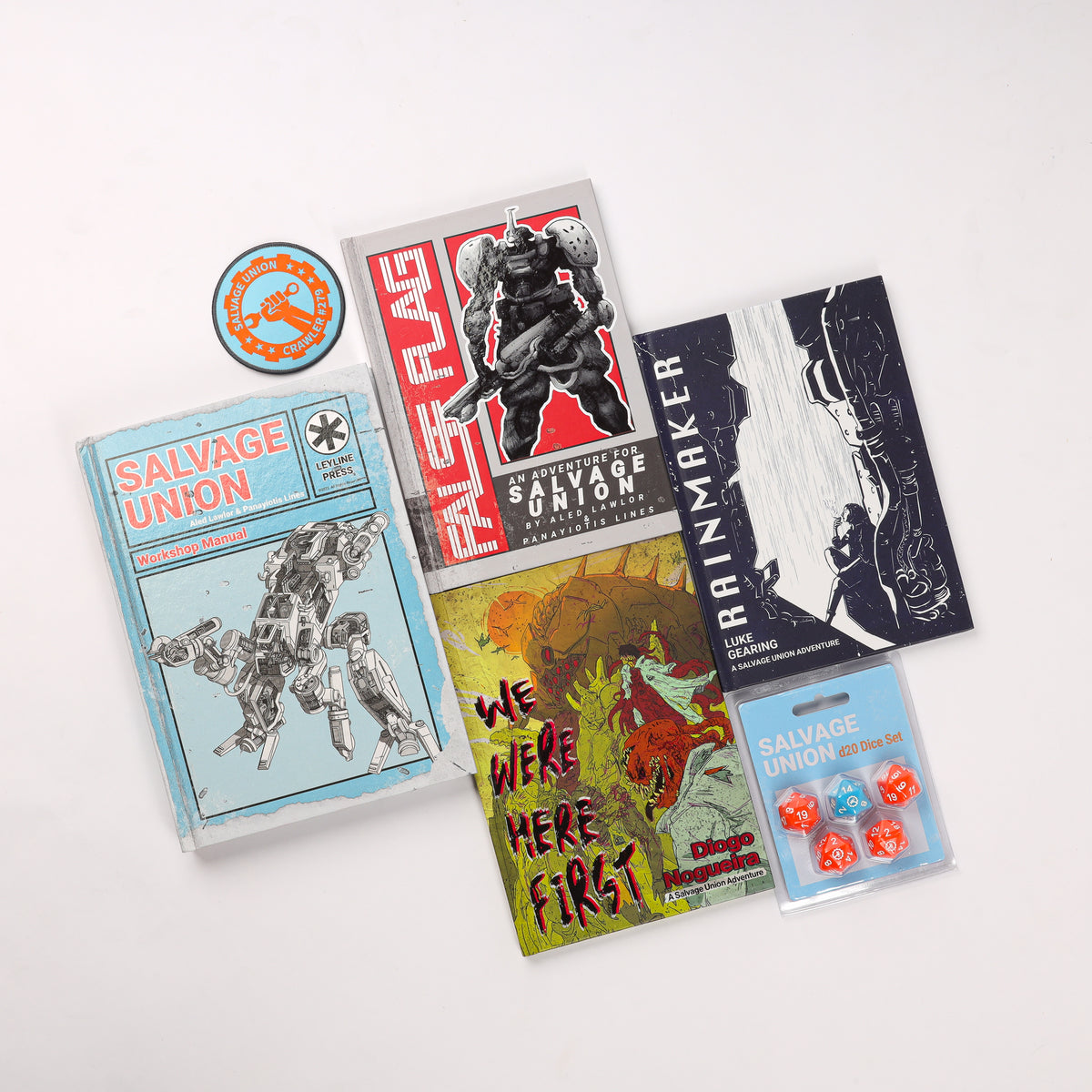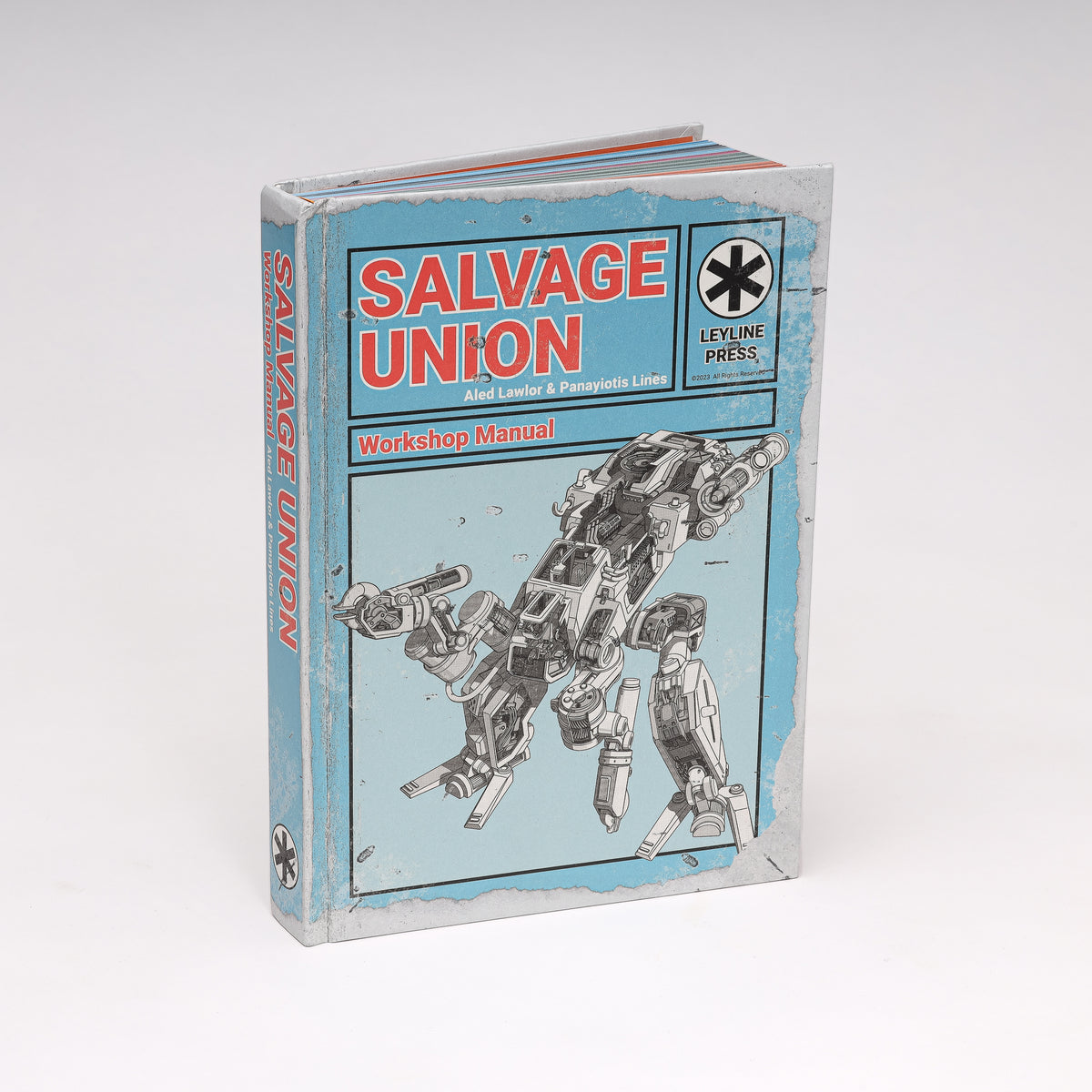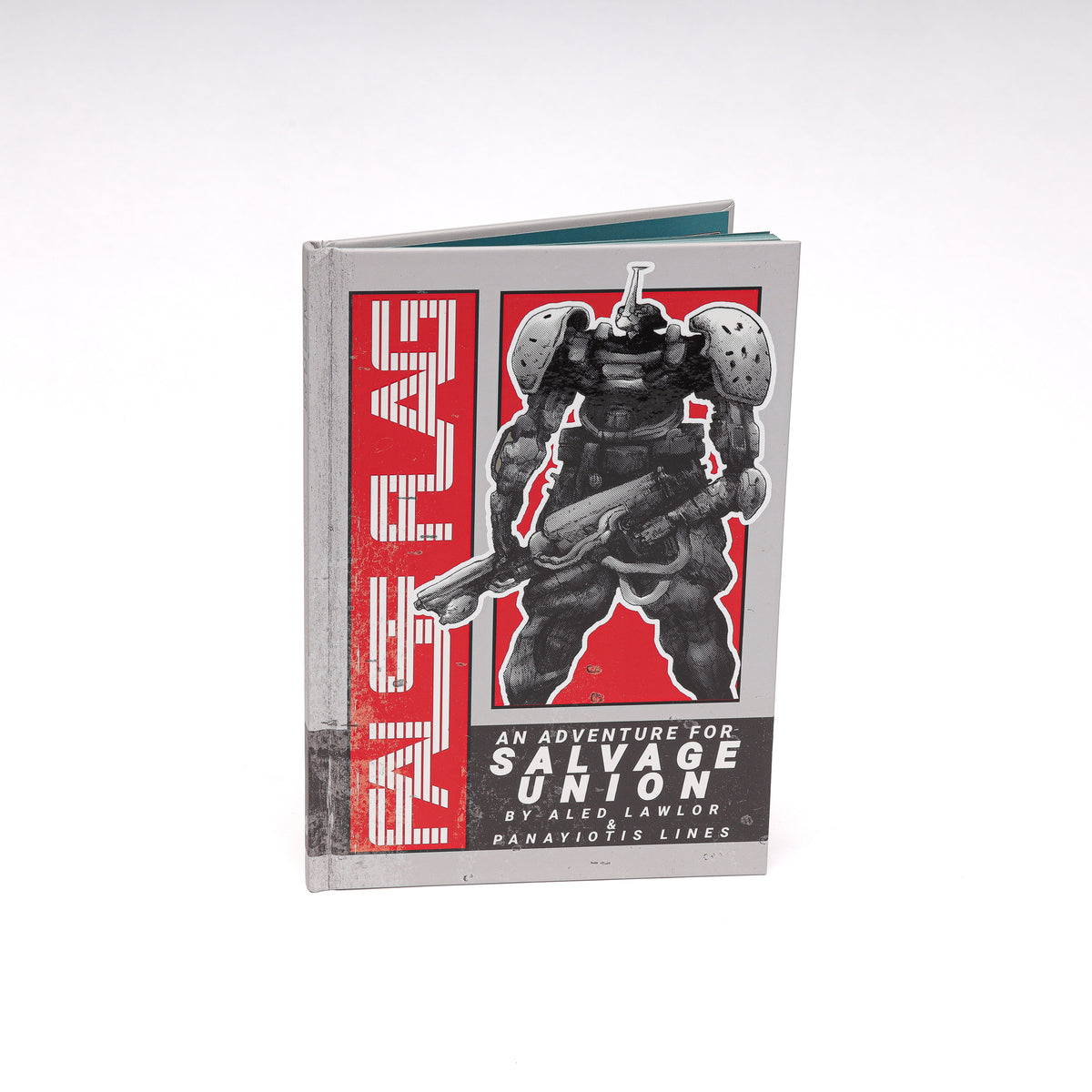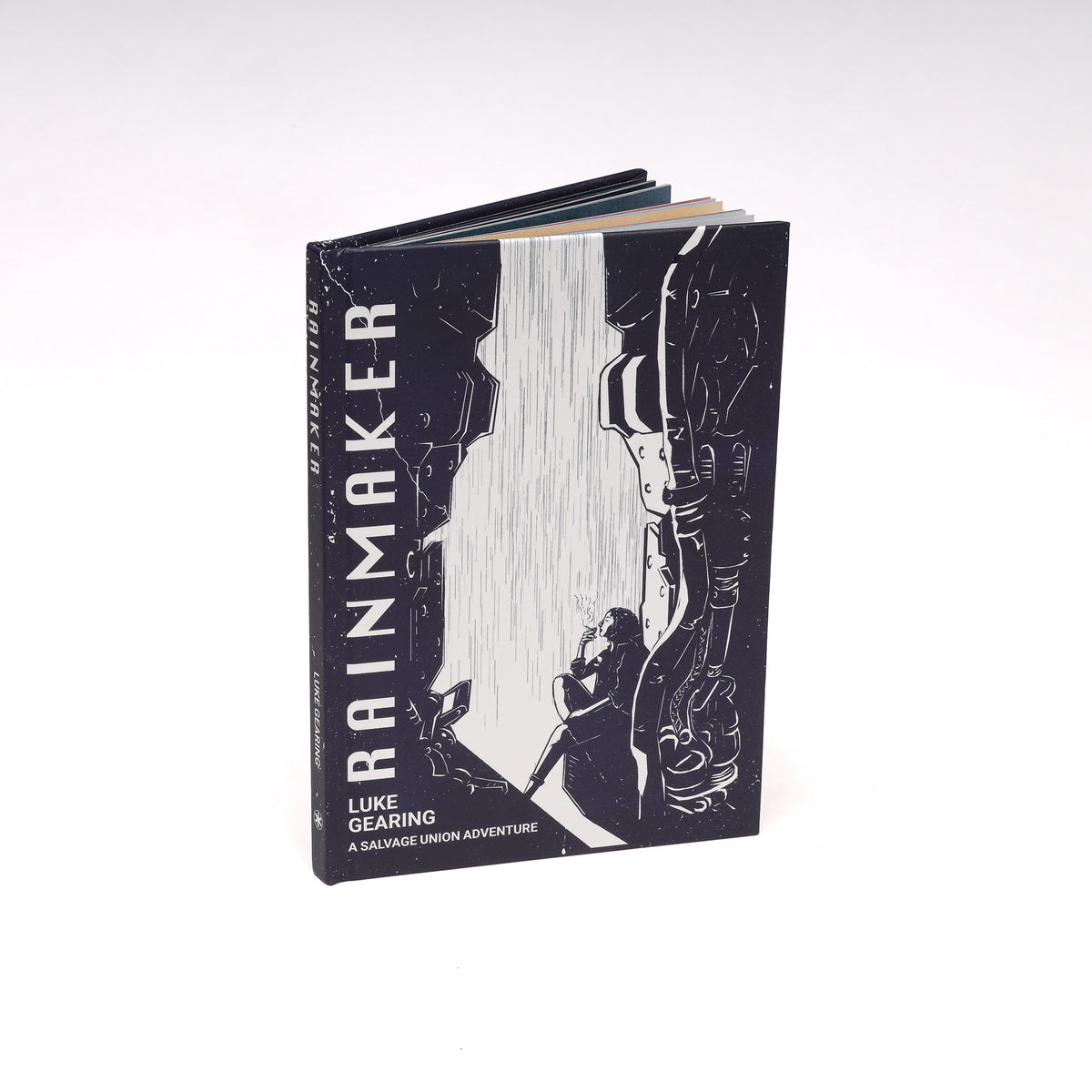This blog follows our previous discussion of some tenents of 'old school' RPG play. We are now going to explore the various 'OSR' systems on the tabletop RPG market. To begin we're taking a look at Old School Essentials (OSE) by Necrotic Gnome.
Old School Essentials is a retroclone of the Basic & Expert D&D Rules by Tom Moldvay, published in 1981. These rules were a revision of Holmes Basic and intended to introduce D&D to new players. They were released in two boxed sets the Red 'Basic' set and the Blue 'Expert' set. They included dice, rules for play and an adventure. The Red Box came with the now seminal The Keep on the Borderlands and the Blue Box came with the equally lauded hexcrawl adventure the The Isle of Dread. OSE falls in a similar category to other retroclones that attempt to recreate the rules of this era such as Basic Fantasy and Labyrinth Lord.

Basic Set Cover
OSE stands out in two ways. It is an incredibly faithful recreation of the Basic & Expert rules, attempting to meticulously recreate them not just in spirit but in gameable practice. This is done through careful research of the original B/X text to make sure that the rules are as close as possible as they were in 1981. Any ambiguities and omissions that were made in OSE are listed out and justified in the text. This is the closest you will get in modern form to being able to play B/X D&D as it was in the 80s.
 OSE Excerpt - Core Rules
OSE Excerpt - Core Rules
OSE couples this faithfulness to the B/X rules set with an incredible layout that makes it quick and simple to look up anything that you need to during play. This is emphasised with multiple different ways to access the core OSE rules. There's an A5 hardcover 'Rules Tome' which contains everything that you need to play in one hefty book. There's a series of smaller A5 hardcover booklets that split up the various rules into bite sized pieces. These include the Core Rules, Genre Rules, Monsters, Treasures and Spells. There's PDF's available of all the above and there's even an online SRD to look up the rules that even includes multiple automated generators for random encounters and treasures.

OSE 'Black Box' Collection
The key selling point of OSE is accessibility. The original B/X rules set were simple for the time but are still tricky texts to parse for a modern audience without factoring in the limited avenues to even purchase them. OSE cleans up the rules whilst keeping faithful to them and offering a wide variety of options for players to start rolling dice. It also adds some new, unique and evocative artwork that keeps in the whimsical spirit of the original old school aesthetic.

OSE Artwork
As for the core of the text itself OSE contains everything that you need to play old school Dungeons & Dragons. This includes rules for character creation, equipment, magic, treasure, lists of monsters and retainers as well as all important dungeon and wilderness exploration procedures.
Everything is as classic B/X D&D as you'll find. Character creation is 3d6 down the line, character alignment is Chaotic, Neutral or Lawful, Magic Users can enjoy 1 spell at first level and you'll be rolling a d20 to save against Dragon Breath.

OSE Excerpt - Ability Tables
It even includes rules most players have likely forgotten such as being able to 'Adjust' your characters prime requisite stat during character creation by downgrading other stats.
There are a few optional rules included to make life easier for modern players. Ascending Armour Class is the most significant of these as it didn't exist at the time. Each monster as well as armour entry is given both an ascending and descending armour class for easy conversion during play and both THAC0 and Hit Bonus are given for both player classes and monsters.

OSE Excerpt - Weapons & Armour
Other optional rules include variable weapon damage instead of all weapons simply dealing d6 as well as rules for morale and encumbrance. There's also rules for advancing beyond the 'max' of level 14 that the original B/X rules ended at. These were all present at the time but hidden within the text and the beauty of OSE is drawing all of these rules out and clearly laying them out for new audiences to use. This enhances the already modular nature of the B/X rules allowing for a great degree of customisation by the referee and players.
OSE does give itself permission to change up and add to the original rules in it's 'Advanced' series of supplements. These are intended to add to the core of the rules with ideas and concepts from AD&D. However they are not faithful to the original rules and instead inspired by them.
This includes adding a B/X interpretation of classes such as The Druid, Illusionist, Barbarian, Paladin and Half-Orc. There’s also rules for splitting race and class rather than running race as class allowing you to play as a Drow Thief or Dwarf Fighter. There's further a simple secondary skill and weapon proficiency system added allowing characters to train in different weapons and skills. This is inspired by the weapon and non-combat proficiency systems seen in AD&D and later on BECMI.
Historically the race/class split would appear in AD&D, but would not appear in the Basic line. Classes such as The Druid would appear but much later in BECMI and as a level 9 'subclass' of the Cleric rather than a class in their own right you can start playing at level 1. Whilst the Half-Orc would appear in AD&D but as a playable race not a class.

OSE Advanced Excerpt - Half Orc Class
There’s further a host of unique modules created for OSE that are cross compatible with various OSR systems, this includes the Dolemwood series set in a fey wild inspired world. Adventures within this world include Winters Daughter and Hole in the Oak. Likewise the rules being so faithful means that any adventure created for B/X whether modern or any of the classic adventures of yore such as The Lost City by Tom Moldvay are fully compatible with the system.

Hole in the Oak Cover
Overall Old School Essentials comes as one of the most highly recommended of all the D&D retro clones on the market. It goes beyond being a product of nostalgia into an incredibly tight and functional system with a wide range of support by its creator as well as its dedicated community that makes it as engaging for modern audiences as any other system out there whilst still having that spark of magic that birthed the entire RPG hobby.
In our next article we'll be looking at OSR Sci-Fi Horror RPG Mothership which you can read here.

Thanks for reading! If you're interested in a trio of OSE compatible, old school fantasy adventures check out Albion Tales.
Subscribe to the Leyline Press newsletter here to receive updates on our blogs, promotions, games and more.
Follow us on twitter @leylinepress
Follow us on facebook @leylinepress
Follow us on instagram @leylinepress
Subscribe to this blogs RSS feed by pasting this into your feed reader - https://leyline.press/blogs/leyline-press-blog.atom






4 comments
Can you tell about adventures for solo play (without a GM)? Or how to adapt adventures for solo play? Thanks.
>As I’ve tried to play with OSE AAC, I’ve found it’s really not spelled out as clearly as I would expect. Is it accurate to say that the attacker adds the ability score modifier, plus the class bonus (for example +2 for a fourth level fighter), to their roll, aiming for a higher total than their opponents’ AC? Or is there some additional factor at play? Thanks for any help.
Hi Steven,
Yes that’s about accurate. The attacker is aiming for an equal or higher total than their AC. They add their ability score modifier and class bonus/‘THAC0’ to that when using ascending AC.
As I’ve tried to play with OSE AAC, I’ve found it’s really not spelled out as clearly as I would expect. Is it accurate to say that the attacker adds the ability score modifier, plus the class bonus (for example +2 for a fourth level fighter), to their roll, aiming for a higher total than their opponents’ AC? Or is there some additional factor at play? Thanks for any help.
Limited avenues?? I guess if you need print editions. But the PDF’s of both rulebooks are available on DM’s Guild for, I believe, 5 bucks each.